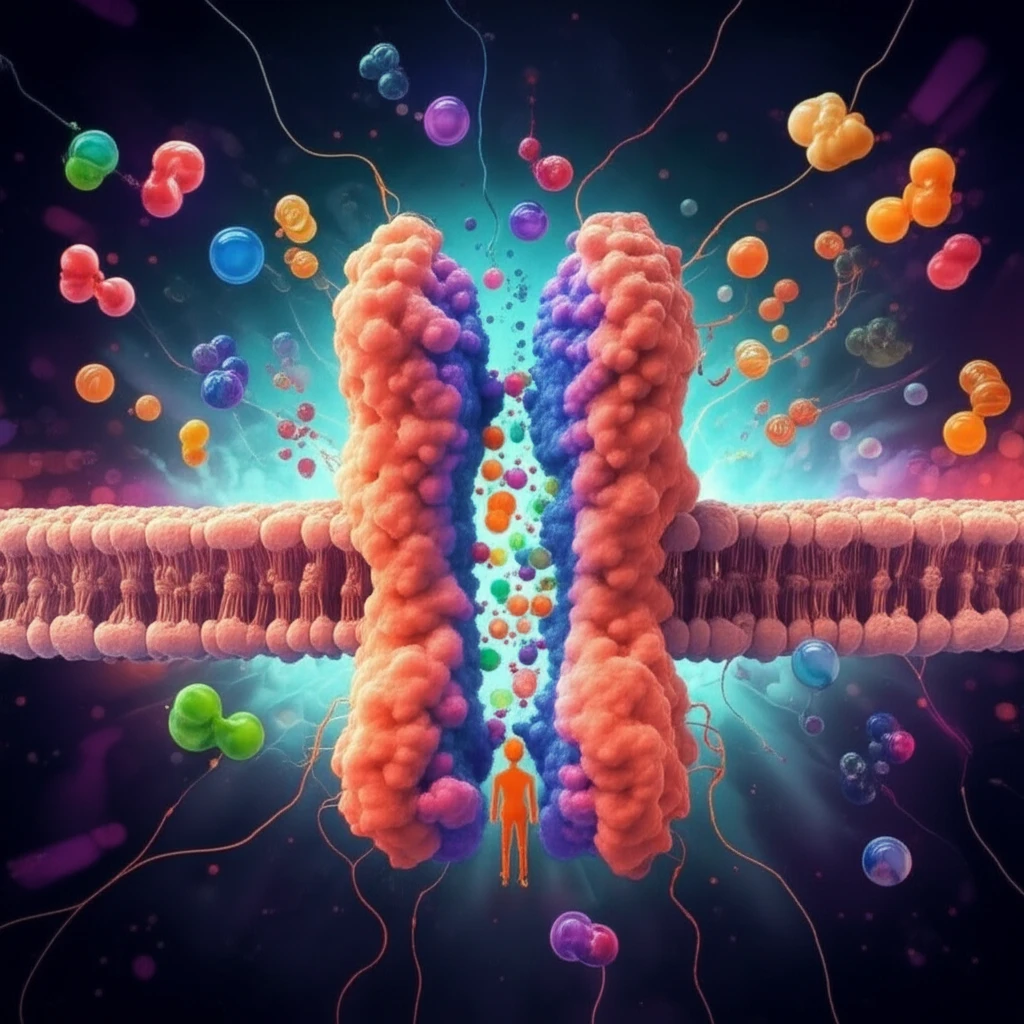
Unlocking Cellular Secrets: How a Tiny Antiporter Reveals the Future of Drug Design
"Scientists uncover the workings of NhaP2 in Vibrio cholerae, paving the way for targeted antimicrobials and a deeper understanding of cellular transport"
In the bustling world of cellular biology, antiporters play a crucial role. These tiny membrane proteins act as gatekeepers, controlling the flow of ions and maintaining the delicate balance of pH within our cells. Like diligent border guards, they ensure that only the right substances pass through, keeping the cellular environment stable and functional. New research is shedding light on the intricate mechanisms of NhaP2 antiporters, particularly in Vibrio cholerae, offering exciting possibilities for new drug therapies.
Vibrio cholerae, a marine bacterium, relies on a trio of cation-proton antiporters, known as NhaP, to manage the transport of potassium (K⁺) and sodium (Na⁺) ions. These antiporters are encoded by three similar genes, Vc-nhaP1, 2, and 3. Among these, Vc-NhaP2 stands out. It plays a significant role in helping bacterial cells survive when faced with acidic conditions. This makes Vc-NhaP2 a key component of the Acid Tolerance Response (ATR), boosting the chances of survival as ingested V. cholerae cells navigate the harsh, acidic barrier of the stomach.
What makes Vc-NhaP2 particularly interesting is its unique ability to bind lithium ions (Li⁺) and exchange them for other alkali cations, but not for hydrogen ions (H⁺). This quirk sets it apart from other Na⁺/H⁺ antiporters, which typically transport Li⁺ in place of Na⁺. Understanding this unusual selectivity could unlock new strategies for narrowly targeting V. cholerae, offering a promising avenue for developing innovative antimicrobial treatments.
Decoding the NhaP2 Puzzle: A Pathway to Cation Binding

To unravel the mysteries of Vc-NhaP2's selectivity, scientists combined protein structure modeling with meticulous site-directed mutagenesis. This approach allowed them to pinpoint the structural elements responsible for the antiporter's unique behavior. In silico analysis revealed that a cluster of negatively charged and polar residues from different transmembrane segments (TMSs) forms a cation-binding pocket right in the heart of the membrane.
- Structural Insights: The Vc-NhaP2 model reveals a unique cation-binding pocket formed by residues from different transmembrane segments.
- Mutagenesis Experiments: Alanine-scanning mutagenesis confirms that structural modifications to the pathway alter cation selectivity and transport activity.
- Lithium Transport: Specific mutations, such as L257A and G258A, enable Vc-NhaP2 to transport lithium ions (Li+/H+), a function absent in the original antiporter.
- Potassium Selectivity: Mutations like T276A and D273A result in Vc-NhaP2 variants that exclusively exchange potassium ions (K+) for hydrogen ions (H+).
- Sodium Specificity: The L342A variant mediates sodium (Na+/H+) exchange only, maintaining strict alkali cation selectivity.
Looking Ahead: The Future of Targeted Therapies
This research not only deepens our understanding of Vc-NhaP2 but also highlights the potential of in silico modeling as a powerful tool for drug discovery. By combining computational analysis with experimental validation, scientists can efficiently identify key structural elements and design targeted therapies. As we continue to unravel the intricate mechanisms of cellular transport, we move closer to developing innovative solutions for a wide range of health challenges.
